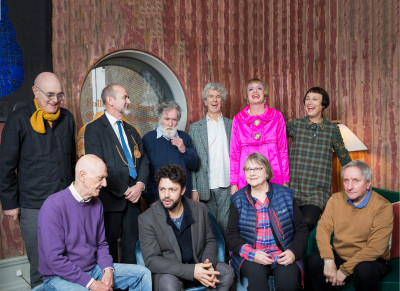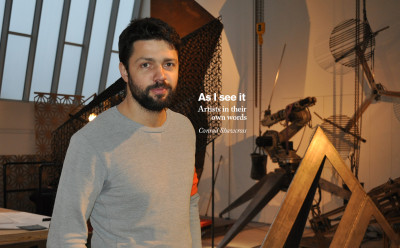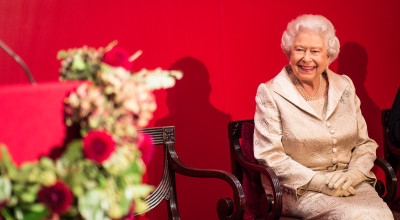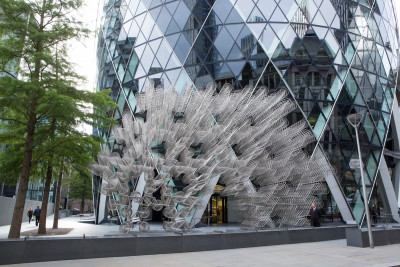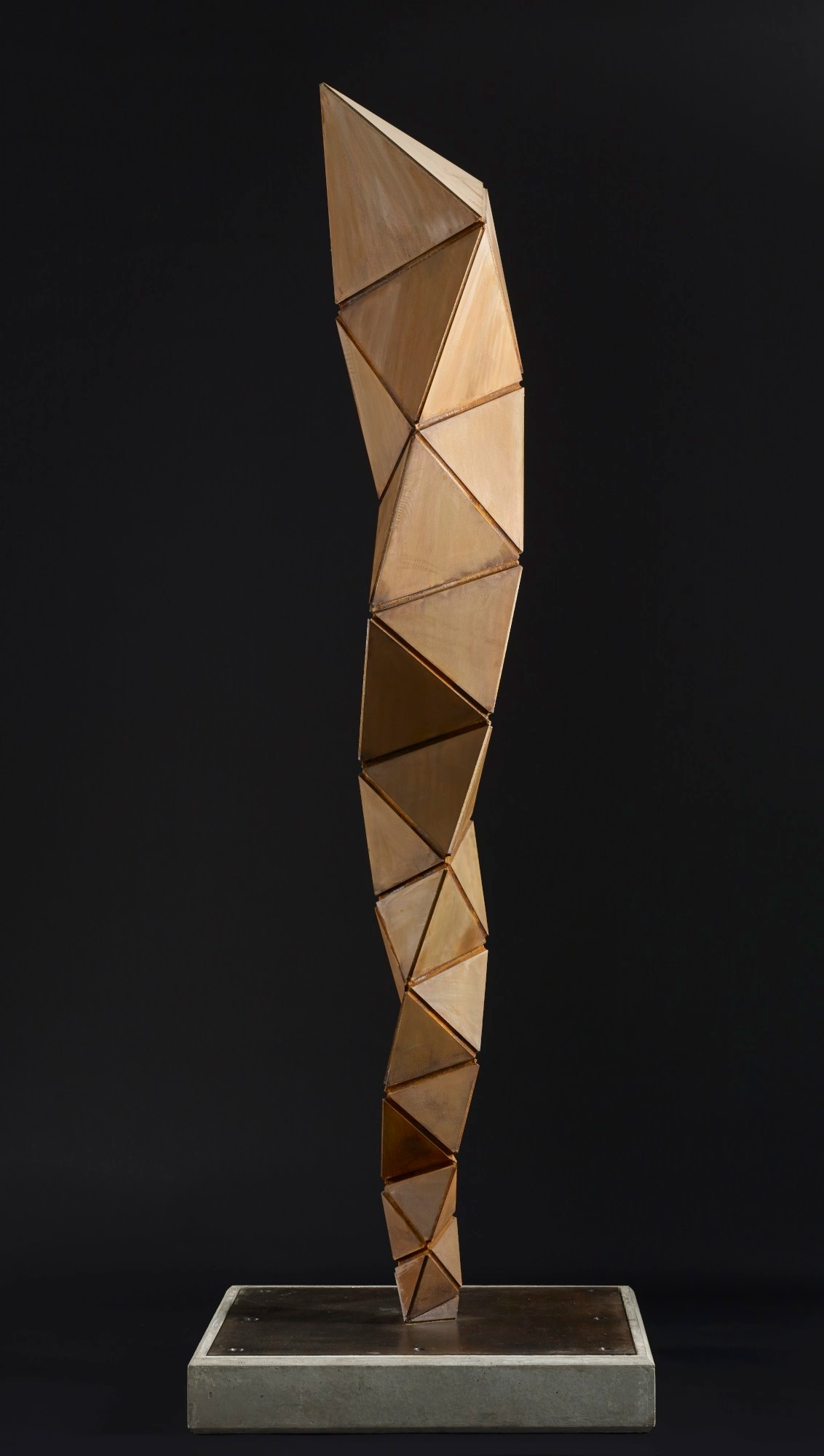
Conrad Shawcross RA, Paradigm Slender (Solid), 2016.
Weathering steel with concrete base. 2400 mm x 760 mm x 760 mm, Weight: 147 kg. © Photo: Royal Academy of Arts, London.
This image is not available to download. To licence this image for commercial purposes, contact our Picture Library at picturelibrary@royalacademy.org.uk
Paradigm Slender (Solid), 2016
Conrad Shawcross RA (b. 1977)
RA Collection: Art
This work is part of Shawcross's Paradigm series of sculptures, each of which is a tower of tetrahedrons which become progressively larger as they ascend. The title refers to Thomas Kuhn's 1962 book The Structure of Scientific Revolution, which holds that when science is faced with anomalies that cannot be accommodated within the current paradigm, that paradigm must be adapted to incorporate these anomalies into a new framework.
The expanding tower is a metaphor for the progress of knowledge and culture, while simultaneously alluding to the precariousness of all knowledge. As the tetrahedrons become progressively larger, the corners of each segment never meet, and the shapes’ imperfect tessellations give the structure a sense of unexpected curvature, like a helix.
As Shawcross puts it: ‘even though it’s quite mighty and stable, it has a modular, cellular system, so as it keeps growing more mighty, more strong, it’s also becoming more fallible and more precarious.’ Paradigm is thus ‘a metaphor of potential…it’s the idea of progress toppling old paradigms, that in order for progression to happen, there needs to be collapse.’
The Paradigm series reflects Shawcross’s ongoing exploration of essential ideas and truths within mathematics, harmonics and geometry, and a constant questioning of what we perceive as real and concrete.
Another edition of this work was shown in the exhibition 'Stacks, Folds and Interference' at Tucci Rosso gallery in Turin in 2016. A smaller work of the same name was exhibited in Shawcross's 2015 exhibition at Victoria Miro, 'Inverted Spires and Descendent Folds', which included several of the Paradigm sculptures. Paradigm Study won the Jack Goldhill Award for Sculpture in the 2014 RA Summer Exhibition. The series culminated in the large 14m high outdoor sculpture Paradigm (2016) outside the Francis Crick Institute, a state-of-the art interdisciplinary medical research centre in King’s Cross, London.
Shawcross’s fascination with the tetrahedron as an imperfectly tessellating form also found expression in the site-specific installation that the artist created in the Annenberg Courtyard for the RA Summer Exhibition 2015. Entitled The Dappled Light of the Sun, 2015, this large-scale, immersive work consisted of five cloud-like forms in weathered steel made up of thousands of identical tetrahedrons. The tetrahedron is a shape that recurs throughout nature, including in the water molecule H2O. Unlike other basic shapes, such as the cube, regular tetrahedra cannot tesselate with themselves, meaning they will never completely fill the space they occupy. Weighing five tonnes each and supported on implausibly slender tripods, these ‘clouds’ created a dramatic canopy raised more than six metres above the courtyard. Shawcross explained: ‘The Greeks considered the tetrahedron to represent the very essence of matter. In this huge work I have taken this form as my ‘brick’, growing these chaotic, diverging forms that will float above the heads of visitors who will be able to wander beneath them.’
Quotations from Conrad Shawcross: The Dappled Light of the Sun, 2015
Object details
2400 mm x 760 mm x 760 mm, Weight: 147 kg
